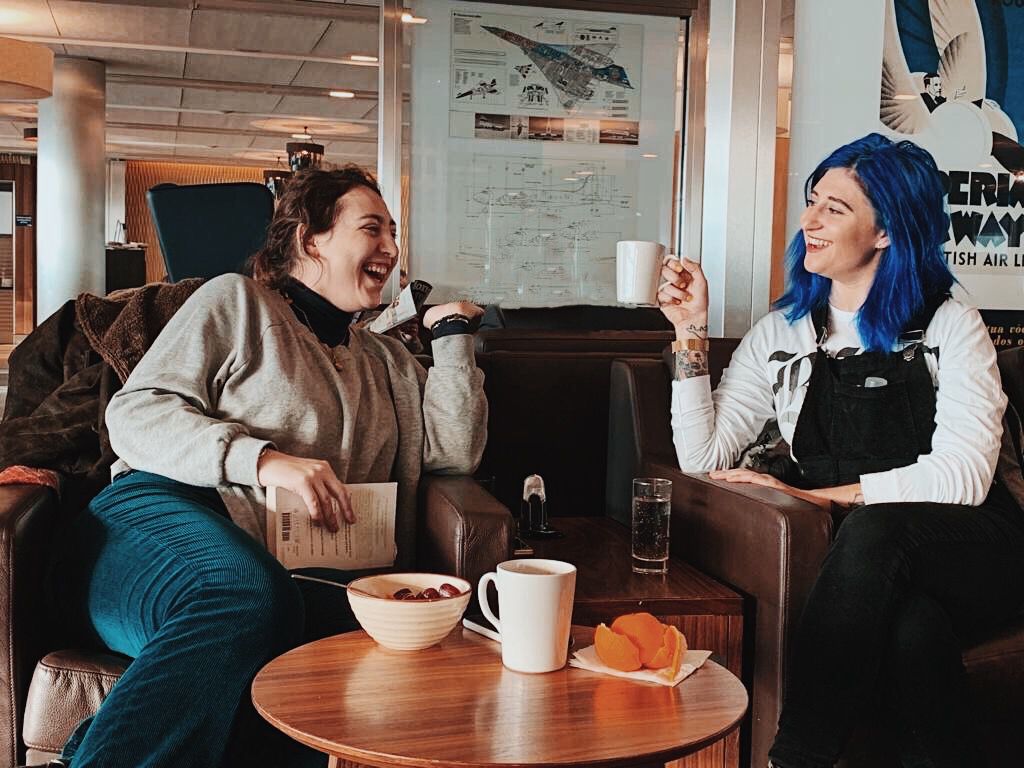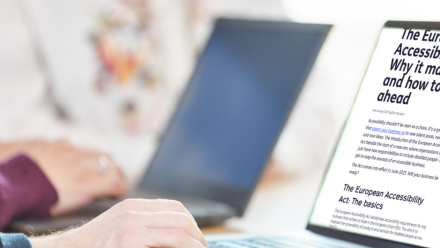What happened to my disability? Navigating neurodiversity as a woman
29th March 2021 by Nikita Montlake
To mark Women’s History Month, our Inclusion Specialist Nikita Montlake discusses her journey to understanding, and celebrating, her own neurodiversity.
As an Inclusion Specialist for Diversity & Ability, one of the first topics covered in our training is the attitudinal barriers society has created towards disability. These barriers can often be internalised by Disabled people. Yet it was only once sitting down to write this article that I began to realise how that had happened to me. All of a sudden I was on a journey of self-discovery into my forgotten ‘Disability’, how it manifested itself in adulthood and the crossovers it has with being a woman in the workplace.
Now that I am aware that I have internalised what is called the Medical Model of Disability, I am on a mission to transform my own opinion of my Dyslexia.
So, where do I start?
When it comes to spelling, reading and writing, failure always seemed inevitable. But in order to finish this article I needed to switch my thinking more towards the Social Model. To me, this meant that by recognising my struggles with articulating myself on paper, I could now embrace what I am good at instead – talking. So I set up some assistive technology to transcribe my thoughts and called my sister.
During our chat, I asked her what me being dyslexic meant to her:
“I don’t know… I just always remembered your Dyslexia being funny. I’m sure it was very frustrating for you, but I never saw it as a disability. I think, that’s just how mom trained me – was to think there’s nothing wrong with your sister.”
I found that framing of the conversation interesting. It is understandable now why it was so easy to laugh off my Dyslexia because that has always been our approach. But now that I better understand my childhood diagnosis, I can clearly see how the undertones of the Medical Model of disability infiltrated its way into my family’s understanding of me and my own understanding of myself.
Growing up I believed my Dyslexia was something I would grow out. And as an adult, will spell check on my phone, it didn’t feel like something I had to worry about any more. But why did I think about Dyslexia as a ‘problem’, or something I have to worry about, in the first place?

Nikita and her sister Tash
The Medical Model Effect
The Medical Model is the belief that the individual is the problem and it is their impairment that needs to be fixed or cured. This was exactly how my disability was dealt with. There was never a discussion about what Dyslexia really meant or how my brain really worked – just what it couldn’t do.
The effect of this is now there is a massive gap in my understanding of what I am capable of and where my Dyslexia manifests as a benefit rather than a deficit. After finishing school, I spent the rest of my life shrugging Dyslexia off as just a spelling problem, when really I was doing myself a disservice.
When I entered the working world I never disclosed my Dyslexia as I didn’t feel it was important. Only now do I realise how much of my struggle in that space was actually down to it. In my last job, what felt like institutionalised misogyny was equally an environment that didn’t know how to get the best out of me when it came to my diversity of thought. But how could they if I never disclosed my Dyslexia in the first place? But then again, why would I if the workplace never made it clear that it was okay to so?
The Female Effect
With the added strain that came with being a woman in a workplace that only celebrated a specific type of man, it was all too easy to feel like I was the problem. This further intersectional nature made it harder to recognise if I was being doubted because I was a woman or because I expressed myself differently. Most likely, it was both.
This realisation has shifted me to the Social Model school of thought. I can recognise now that it was the environment that created the disabling factors. Having that expectation to perform in a certain way, with no consideration towards what would help me do a better job, took me straight back to that feeling of being a failure.
During that call, my sister made the poignant comment that: “You always just had to work a little bit harder”
That concept of needing to work that little bit harder has followed me through adulthood. It is common to hear such a sentiment amongst women. But now that I have entered an environment that celebrates difference, my entire belief in myself and my capabilities has been flipped on its head.
The Effect of D&A’s Celebratory Model
I have somehow managed to land my dream job without even realising it. Being a workshop facilitator means I need to trust my intuition, creativity and ability to speak off the cuff – all skills that allow my Dyslexia to shine.
D&A’s very foundation is a celebratory model of disability. We acknowledge that disability and neurodiversity are not burdens, but benefits. With true space for diversity of thought and lived experiences, we can all be happier, safer, and more successful.
There is a dramatically noticeable difference – both in workplace culture and in my own sense of self-worth – now that I am in an environment that is explicitly embracive of difference. It has transformed my working experience. Just knowing that D&A not only embraces difference but celebrates it has completely transformed my understanding of myself and how I work best.
For the first time I had been asked what I needed to be able to access my work. The truth is I don’t actually know what I need, but I know I am now in a supportive space where I can figure that out.


